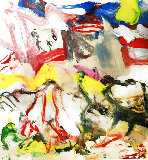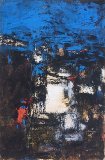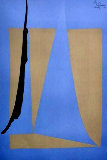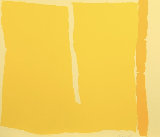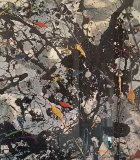-

-
Alma Thomas
United StatesArt Brokerage: Alma Thomas American Artist: b. 1891-1978. Alma Woodsey Thomas (September 22, 1891 – February 24, 1978) was an African-American Expressionist painter and art educator. She lived and worked primarily in Washington, D.C. and the Washington Post described her as a force in the Washington Color School. Alma Thomas' early work was representational in manner, and then and upon classes at Howard and training under James V. Herring and Lois Mailou Jones her work became more abstract. Thomas would not be recognized as a professional artist until her retirement from teaching in 1960, when she enrolled in classes at American University. There she learned about the Color Field movement and theory from Joe Summerford and Jacob Kainen and became interested in the use of color and composition. Within twelve years after her first class at American she began creating Color Field paintings, inspired by the work of the New York School and Abstract Expressionism. She worked out of the kitchen in her house, creating works like Watusi (Hard Edge) (1963), a manipulation of the Matisse cutout The Snail, in which Thomas shifted shapes around and changed the colors that Matisse used, and named it after a Chubby Checker song. Her first retrospective exhibit was in 1966 at the Gallery of Art at Howard University, curated by art historian James A. Porter. For this exhibition she created Earth Paintings, a series of nature inspired abstract works, including Wind and Crepe Myrtle Concerto (1973) which art historian Sharon Patton considers "one of the most Minimalist Color-Field paintings ever produced by an African-American artist." These paintings have been compared to Byzantine mosaics and the pointillist paintings of Georges-Pierre Seurat. A friend of Delilah Pierce, Thomas and Pierce would drive into the countryside where Thomas would seek inspiration, pulling ideas from the effects of light and atmosphere on rural environments. Thomas was, in 1972, the first African-American woman to have a solo exhibition at the Whitney Museum of American Art, and within the same year an exhibition was also held at the Corcoran Gallery of Art.
Read More + - Create Listing 0 Artworks for sale 5 Followers
-
We are actively seeking listings for Alma Thomas.
Create a free listing or free wanted ad.
-
Art Wanted
We have interested buyers looking for these artworks by Alma Thomas:
- CREATE AD
- Collector Requests (1)





